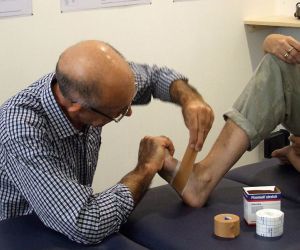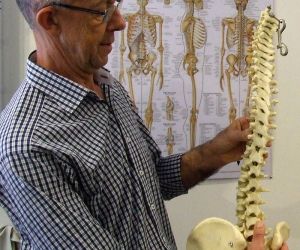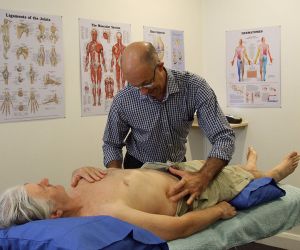Peter has a strong background in managing workplace injuries within the workers compensation system. Treatment is based around identifying the injury and its cause, building confidence for recovery, manual therapy and exercises to loosen tight structures and exercises to strengthen weak muscles. Peter teaches safe work postures/methods to aid recovery and prevention of re-injury.
Workplace visits can be arranged to assist with suitable duties planning, and/or provide manual handling training, office set up and ergonomic assessment to help avoid recurrence.
Hips are treated with release of tight muscles and strengthening where there is muscle imbalance. Pain can be of arthritic origin. While arthritis cannot be reversed, maintaining good strength and flexibility can improve your ability to walk and move normally.
Knees pain is a common reason for seeing a physiotherapist. Peter will assess your knees for ligament and meniscus damage and ensure your patella (knee cap) is tracking correctly. Sometimes knee pain is related to pelvic asymmetry and/or muscle weakness, which can often be corrected. Home exercise is often the best approach to treatment.
Ankle injuries may require taping to unload injured ligaments. Peter will check for joint stiffness and mobilize affected joints in your ankle and foot. Strengthening exercises are usually indicated to protect the ankle from further injury and to allow return to normal activity. Balance and proprioception exercises are also an important part of the rehabilitation process.
Proprioception is the brain's awareness of where body parts are in space. Proprioception is often decreased after an ankle injury. Good proprioception allows the brain to know your ankle is going over before it happens, and recruit muscles to stop the injury. This normally happens without you being aware of it. Peter will teach you proprioception exercises to restore this important sense.
Foot pain can be due to joint and ligament problems. Pronation (flat feet) is often a problem. Plantar fasciitis is another common problem. If orthotics are required Peter will refer you to the best option for you.
Pain and stiffness are best treated with careful assessment of joint movement, strength and flexibility. Peter treats with manual therapy and home exercises. Attention is given to possible neural involvement.
Pain can radiate from pressure on a nerve. Releasing associated joints and muscles, and mobilization of the nerves themselves helps clear radiating pain. People often also suffer from neural tension. This is where the nerve is not sliding freely as you move spine, arms and legs. Neural mobilization methods can be easily learnt and practiced at home. At times neural mobilization is an important factor in recovery from a musculoskeletal injury.
Conditions treated
- Core stability
- Hips, knees, ankles and feet
- Lower back pain
- Management of acute injuries
- Neck pain and Headache
- Neurological pain in arms and legs
- Overuse injuries
- Pelvic Asymmetry
- Physical Rehabilitation
- Problems associated with cycling
- Problems associated with yoga
- Shoulder, elbow, wrist, hand, and fingers
- Sports injuries
- Vehicle seating - adjustment and adding support
- Work injuries



